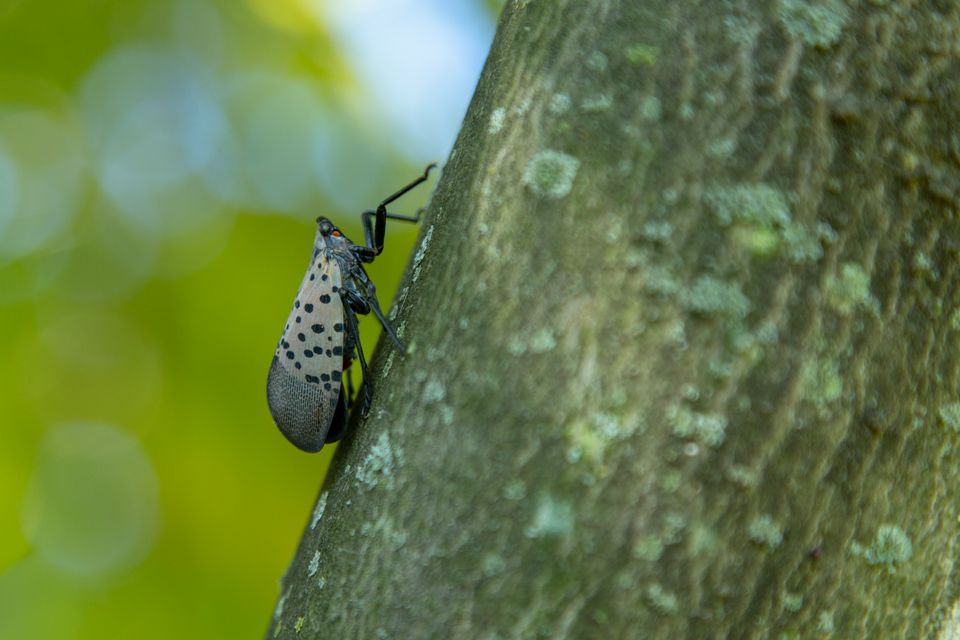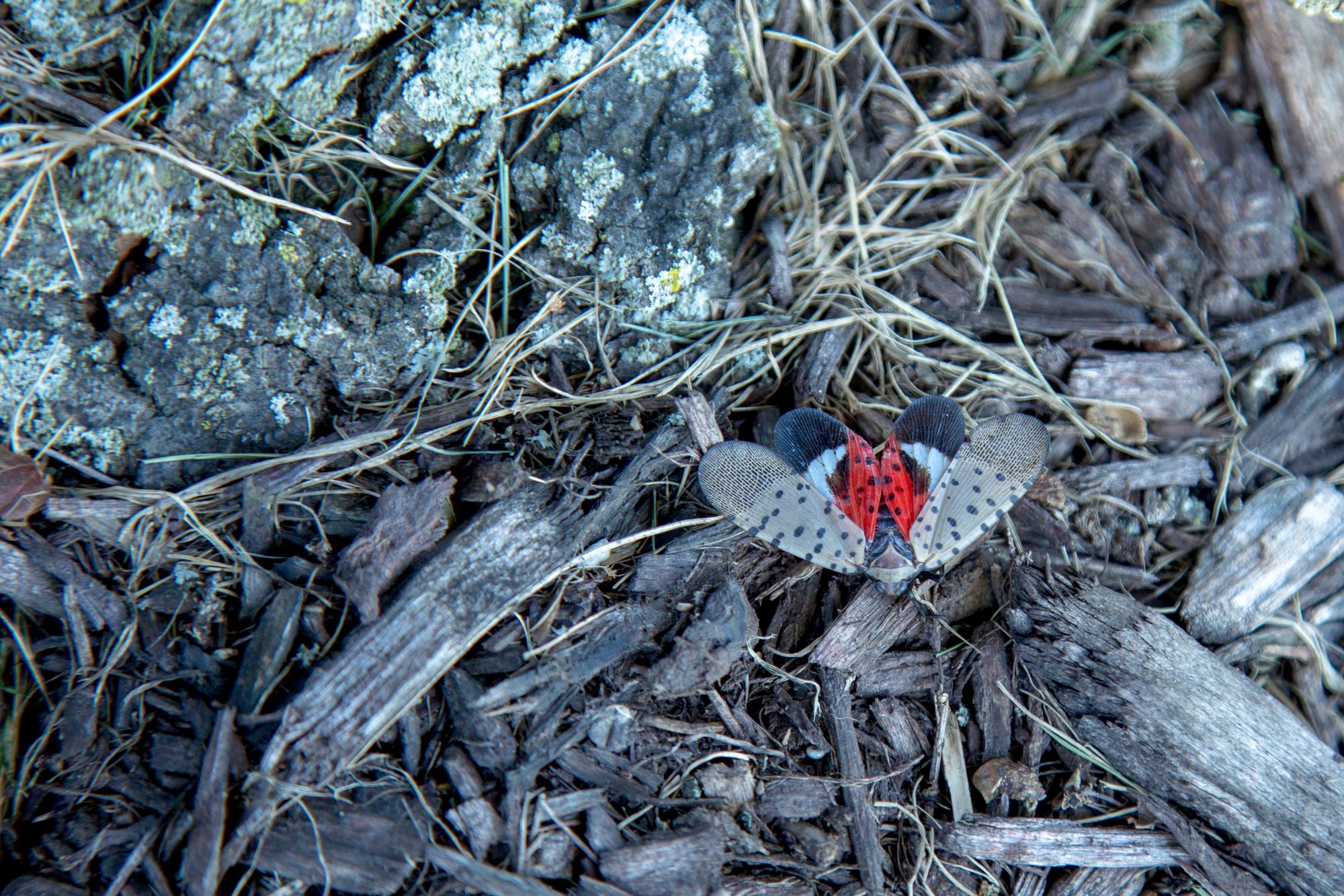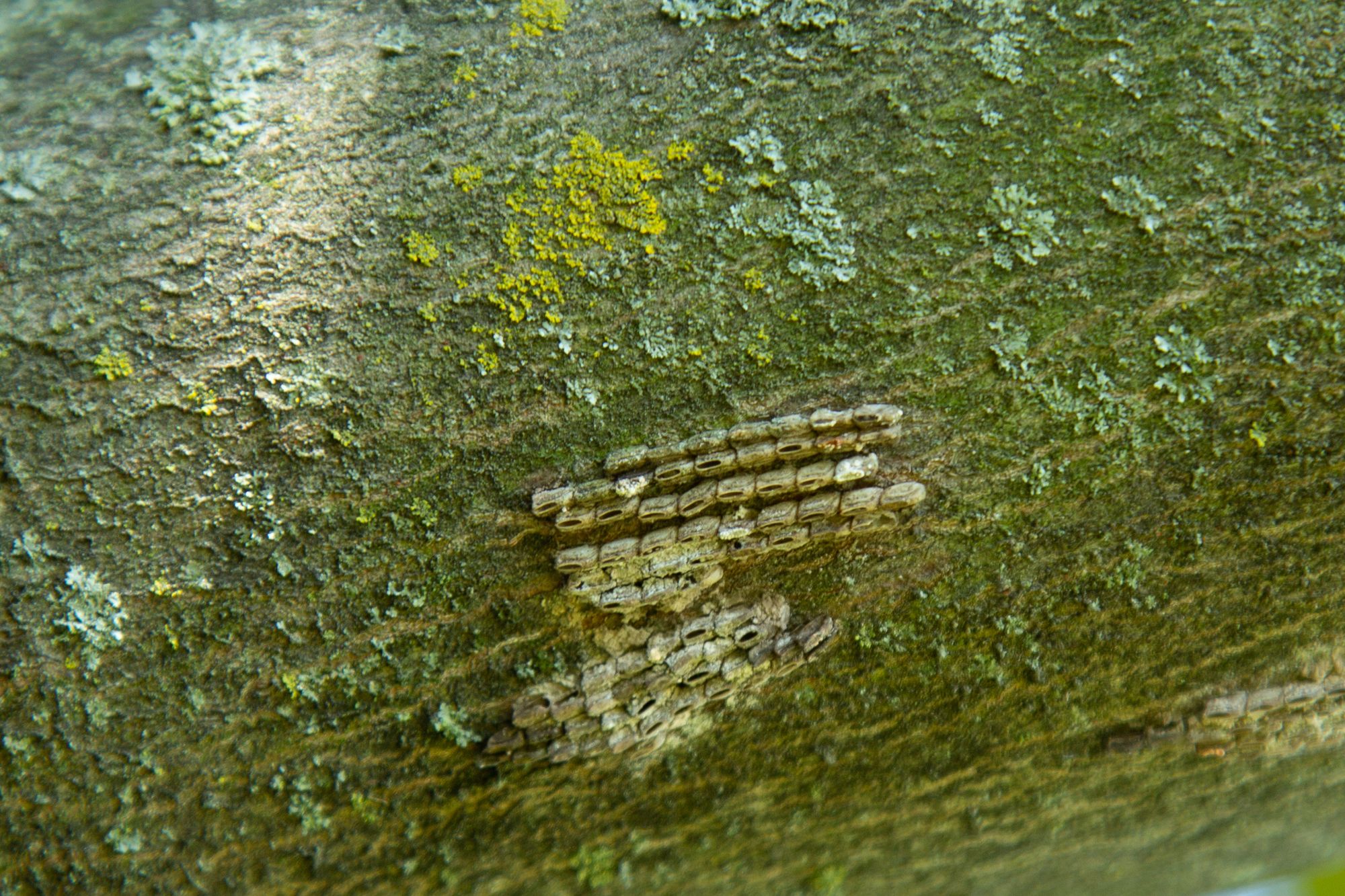Is it too late to stop the invasive spotted lanternfly?

Despite quarantines, public squashing campaigns and federally subsidized bug-spraying blitzes, the spotted lanternfly continues its stubborn game of hopscotch across the Mid-Atlantic region.
Pennsylvania added 11 counties to its quarantine zone earlier this year, raising the total to 45. Maryland designated nine new counties, bringing its number to 11. And in Virginia, agriculture officials announced a new detection in Prince William County but declined to include the county among the state’s four quarantined jurisdictions.
Experts suspect the first lanternflies arrived in the United States in 2014 in Berks County, PA, aboard a shipment of stone from their native China. Since then, the winged pests have invaded 11 states, mostly in the Mid-Atlantic and Midwest. They have been reported in every Chesapeake Bay watershed state but not the District of Columbia.
The lanternfly’s latest push into new territory increases the already long shot odds of expelling the invasive species. And they serve up more evidence behind an emerging scientific consensus that the pretty, but destructive, bugs are winning the battle.
“There’s a lot of research being done on spotted lanternfly, and I don’t think any of it is positive,” said David Gianino, who oversees the plant industry division of the Virginia Department of Agriculture and Consumer Services.
“We can’t eradicate it at this point,” he added. “It’s here to stay. All we can do at this point is to slow its spread.”
Why keep up the fight? The typical response is that there are simply too many livelihoods at stake.
The bugs themselves are fascinating-looking. Measuring an inch long by a half-inch wide, they have large, colorful wings with spots that give them their name. The front set is usually beige with black dots. The back wings are two-tone — a bottom of scarlet with black spots and a top of black and white stripes.

Lanternflies, though, feast on 70 types of plants and crops, including apples, peaches, oaks and pines. And they are especially unkind to alcohol lovers: Hops and grapes are among its dining options. In the early days of the infestation in Berks County, some wine vineyards lost almost 100% of their crop to the voracious bugs.
“While they are not known to pose any serious human or animal health concern, the spotted lanternfly is a destructive invasive species that has negatively impacted agriculture operations throughout the Mid-Atlantic region,” said Maryland Department of Agriculture Secretary Joe Bartenfelder. “MDA has taken steps to expand the quarantine zone out of an abundance of caution as we remain vigilant in controlling the spread of this destructive insect.”
Read more: Where they're found in Delaware
One of the biggest challenges with controlling the spread is that lanternflies tend to move into new areas by hitchhiking in cargo or on the sides of vehicles, with anyone’s guess where they might pop up next.
The quarantines restrict the movement of certain articles that might contain the spotted lanternfly in any of its life stages, including egg masses, nymphs and adults. Restricted items include plants, construction waste, firewood, packing materials and vehicles. Businesses, municipalities and government agencies that require the movement of such items must obtain a specialized permit.
Officials in many states have turned to the public for support, hoping to build a volunteer army of lanternfly squashers. They are most vulnerable to stomping in their egg stage.

A sampling of recent news headlines reflects the increasingly dire tone of the crusade: Die, beautiful spotted lanternfly, die; See a spotted lanternfly? Squash it, officials say; For states dealing with the spotted lanternfly, the policy is no mercy; and Stomp them out!
Another problem: The lanternfly’s diet is so varied that it’s all but impossible to put a dent in their numbers by removing their sources of food, said Shannon Powers, a spokeswoman for the Pennsylvania Department of Agriculture.
“Is it realistic to think they’ll be eradicated? We don’t know,” Powers said.
Scientists are coming to a similar conclusion. A Purdue University study, for instance, that was published last December attempted to quantify the rate of the lanternflies’ spread. The researchers based the analysis mainly on visual surveys conducted 2014–19 by the U.S. Department of Agriculture and Pennsylvania Department of Agriculture.
It estimated that infested areas were spreading at a rate of about 25 miles per year in all directions. The researchers concluded that the best states can do is to slow the insects’ rate of expansion.
“Based on the results presented here, we anticipate that spotted lanternflies will continue to spread in the USA, though management and eradication efforts may effectively reduce population densities, reproductive potential and ultimately rate of spread,” they wrote.
In Virginia, lanternflies have been largely relegated to the state’s northern tip. Gianino wants to keep it that way. The state is looking to receive $750,000 in USDA funding this coming year, a $40,000 bump over the current year, to continue the fight.
“For us, by taking some action to control its spread, we are protecting the industries that are the greatest risk in Virginia,” Gianino said.
But obstacles abound. Last year, he and his colleagues observed the biggest jump to date in localities with detections – what he called a “banner year.” He blames the uptick on an increase in traveling as coronavirus restrictions began to lift.
But commerce probably also played a role in the spread, he added. The economic slowdown during the height of the pandemic left many shipping containers sitting around, giving lanternflies plenty of time to slather them with egg masses, Gianino said. Once those containers got moving again, the insects went along for the ride into new domains.
The lanternfly is slipperier than most pests, Gianino explained. So far, no one has been able to find or develop a chemical to lure lanternflies to a trap. And it appears to have no natural predators. The way he sees it, efforts to suppress the spread buy time for researchers to develop better tools for the fight.
“We’re putting out some small fires when it comes to this pest,” he said, “but we don’t have any silver bullets yet.”
Jeremy Cox is a Bay Journal staff writer based in Maryland. You can reach him at jcox@bayjournal.com. Bay Journal Media is a nonprofit that reports on environmental news and issues in the Chesapeake Bay watershed. You can find more of their work here.
More stories:




